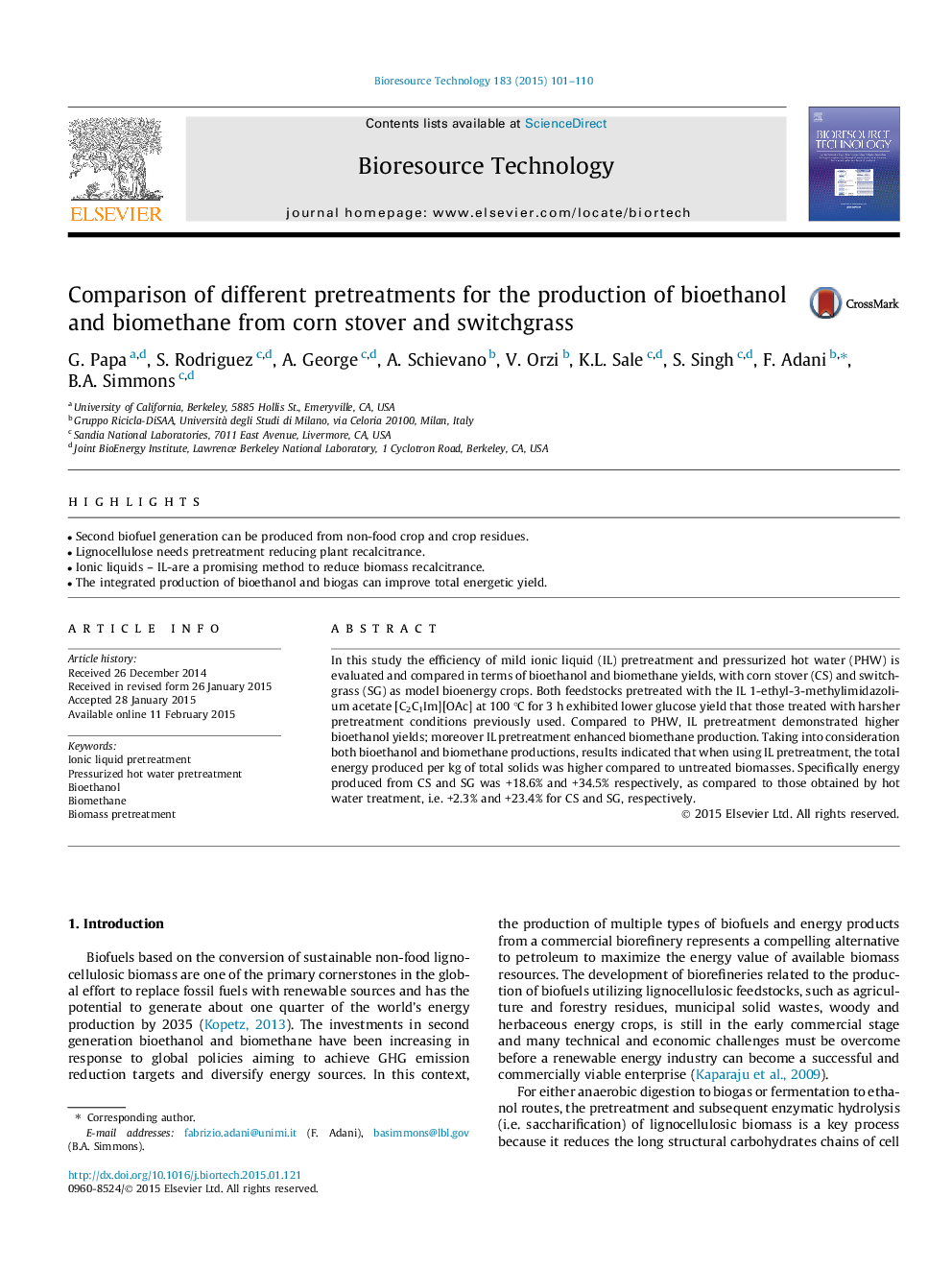| کد مقاله | کد نشریه | سال انتشار | مقاله انگلیسی | نسخه تمام متن |
|---|---|---|---|---|
| 679877 | 1459960 | 2015 | 10 صفحه PDF | دانلود رایگان |
• Second biofuel generation can be produced from non-food crop and crop residues.
• Lignocellulose needs pretreatment reducing plant recalcitrance.
• Ionic liquids – IL-are a promising method to reduce biomass recalcitrance.
• The integrated production of bioethanol and biogas can improve total energetic yield.
In this study the efficiency of mild ionic liquid (IL) pretreatment and pressurized hot water (PHW) is evaluated and compared in terms of bioethanol and biomethane yields, with corn stover (CS) and switchgrass (SG) as model bioenergy crops. Both feedstocks pretreated with the IL 1-ethyl-3-methylimidazolium acetate [C2C1Im][OAc] at 100 °C for 3 h exhibited lower glucose yield that those treated with harsher pretreatment conditions previously used. Compared to PHW, IL pretreatment demonstrated higher bioethanol yields; moreover IL pretreatment enhanced biomethane production. Taking into consideration both bioethanol and biomethane productions, results indicated that when using IL pretreatment, the total energy produced per kg of total solids was higher compared to untreated biomasses. Specifically energy produced from CS and SG was +18.6% and +34.5% respectively, as compared to those obtained by hot water treatment, i.e. +2.3% and +23.4% for CS and SG, respectively.
Journal: Bioresource Technology - Volume 183, May 2015, Pages 101–110
